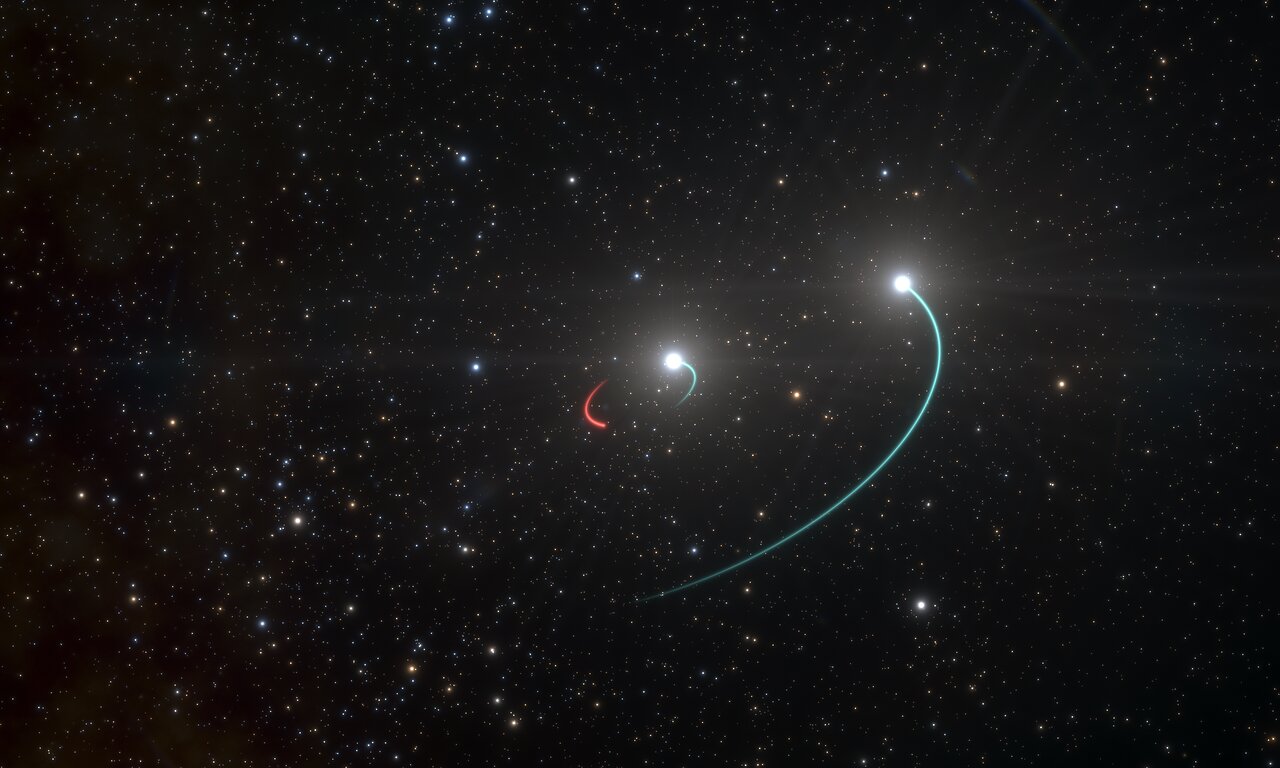In a surprising find, the international ALMA Survey of Orion Planck Galactic Cold Clumps (ALMASOP) team recently observed a young quadruple star system within a star-forming region in the Orion constellation. The discovery was made during a high-resolution survey of 72 dense cores in the Orion Giant Molecular Clouds (GMCs) using the Atacama Large Millimeter/submillimeter Array (ALMA) in Chile. These observations provide a compelling explanation for the origins and formation mechanisms of binary and multiple-star systems.
The team was led by Prof. Liu Tie from the Shanghai Astronomical Observatory (CAS-SHAO). He was joined by researchers from the CAS-SHAO, the School of Astronomy and Space Science (CAS-SASS), the NRC Herzberg Astronomy and Astrophysics, the National Astronomical Observatory of Japan (NAOJ), the Max Planck Institute for Astronomy (MPIA), the Korea Astronomy and Space Science Institute (KASI), Academia Sinica Institute of Astronomy and Astrophysics (ASIAA), the NSF NOIRLab’s International Gemini Observatory, the Armagh Observatory and Planetarium, NASA’s Jet Propulsion Laboratory, and multiple universities and institutes.

It’s a well-known fact among astronomers and astrophysicists that roughly half of the stars in the Milky Way reside in binary systems. Knowing how multiple star systems form is essential to understanding galactic evolution, planetary formation, and the emergence of life. The most widely accepted theory regarding star formation (the Nebular Hypothesis) states that stars form in the densest regions of molecular clouds (aka. “dense core”). While this theory accounts for individual star systems very well, the mechanisms that drive the formation of multi-star systems are not yet well understood.
It is currently thought that multiple star systems form via the fragmentation of cloud cores during their early evolution, but observations are historically lacking. To investigate this mystery, the ALMASOP team examined 72 young and cold cores in the GMCs in the Orion constellation for thermal emissions corresponding to a wavelength of 1.3 mm – in the extremely high frequency (EHF) range.
When observing a dense cold core in Orion B GMC about 1,500 light-years from Earth (designated G206.93-16.61E2), they observed a system of four stellar objects.
These consisted of two protostars and two gas concentrations that are likely to undergo gravitational collapse in the near future. They further observed that the largest separation between the four objects in the system was about 1,000 Astronomical Units (AUs), over 33 times the distance between the Sun and Neptune (30 AUs). This stands in contrast to the last time a quadruple system was observed in 2015 by another international team using ALMA. In that case, the discovery team observed a young protostar and three gravitationally-bound dense gas clouds that would form new stars in ~40,000 years.
In that case, however, the quadruple system observed had a wide separation far greater than 1,000 Astronomical Units (AUs). The dust emission spectra also revealed several elongated ribbon-like structures that bound the four objects together and extended outwards. To determine the role played by these structures, the team conducted a numerical simulation that compared a similar quadruple system to the one they observed. Based on the results, the team theorizes that these extended ribbons could be “funnels” that transport gas from the core’s outer envelope to the protesters and connect newborn stars.

Said Luo Qiu-yi, a Ph.D. student at SHAO and the first author of the study:
“The exceptional compactness and close-proximity of this system is a fascinating discovery. The analysis suggests that this system is very likely to form a gravitationally bound quadruple star system in the future. We do not have an explanation that how the gas outflows propagate as they might be entangled with gas accretion processes of system members. This study highlights the complicated interactions among members in a forming higher-order star system.”
“The simulation supports that these ribbons can serve as large-scale accretion streamers,” added Prof. Liu. “Thus, the two gas condensations in the system have the potential to form a star relying on the feeding of these continuum ribbons. The accretion streamers could also fragment, and further form new stars.”
Last, the observations revealed intricate gas outflows caused by the stellar winds generated by the protostars in the system, causing some of the accreting gas and dust to be lost. Similar to what has been observed around Active Galactic Nuclei (AGNs), where winds generated by the Supermassive Black Hole (SMBH) push material out of the galactic center, this could impact the evolution of this system. Future observations using ALMA and other millimeter/submillimeter observatories, scientists hope to reveal more details about multi-star systems in the formation process.
Further Reading: Chinese Academy of Sciences

